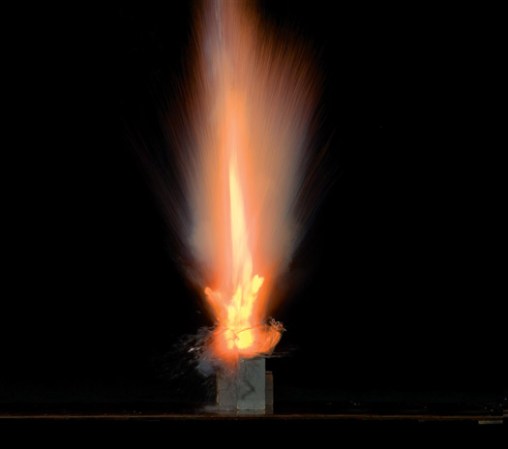

From: Priya Singh, Commander, Daedalus 4 Mission Result: Success Timestamp Sent: July 18, 2438; 08:29:16.4 Zulu Timestamp Received: July 18, 2014; 08:29:16.4 Zulu
Attention, Mission Control:
We have successfully broken the light barrier! Readings from before and after the jump indicate a displacement of 262,166 miles in 0.77 seconds, meaning a transition velocity of 1.82 times the speed of light. We are proud to be the first ship in history to travel faster than light!
The quantum drive initially failed to operate with any of the first 217 suggested settings. But the 218th, configuration 924-Alpha-6F, worked perfectly. The crew is healthy and jubilant. We’ve lost all signals from Earth other than low-power background radio noise. We suspect our reception array was damaged by pseudo-Cherenkov emissions as we passed through solar magnetic fields, but it’s difficult to say. This is the first time matter has passed through a magnetic field faster than light.
We’ve run several diagnostics on the equipment and can find nothing wrong, but we’ll continue to work the problem. It’s not critical—we will be back on Earth in four days. But be advised that we’re broadcasting in the blind; we won’t hear your response.
Side note: Turns out the astronomy software has serious bugs. We’ve observed the positions of Mercury, Venus, and Earth, and they don’t remotely match the dataset predictions. Fortunately, we identified the problem and are navigating by observed data instead of the predicted values.
We’re setting course for Earth return now.
CLASSIFICATION TOP SECRET:
FOR THE PRESIDENT ONLY. THE ABOVE MESSAGE WAS INTERCEPTED BY AN NSA RECON SATELLITE. THE COMMANDER OF THE MISSION APPEARS TO BE UNAWARE HER SHIP HAS TRAVELED BACK 400 YEARS. THE AIR FORCE CONFIRMS AN ARTIFICIAL OBJECT IS ON COURSE TOWARD EARTH WITH AN EXPECTED ARRIVAL OF JULY 22, 2016. AWAITING EXECUTIVE ORDERS ON HOW TO PROCEED.
***
Andy Weir, author of The Martian, whose film adaptation will be out in October.
This article was originally published as part of our “Dispatches From The Future” science fiction feature in the August 2015 issue of Popular Science.




![A Size Comparison Of Sci-Fi’s Greatest Machines And Monsters [Infographic]](https://www.popsci.com/wp-content/uploads/2019/03/18/5WIBA7IOLX2PH5DQPIAG727XRM.jpg?w=600)

![What The Future Will Look Like, According To Famous Science Fiction [Infographic]](https://www.popsci.com/wp-content/uploads/2019/03/18/RZLJ3QQSFO7JRLRZ7EFA2QH2FY.jpg?w=525)








